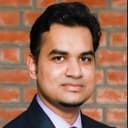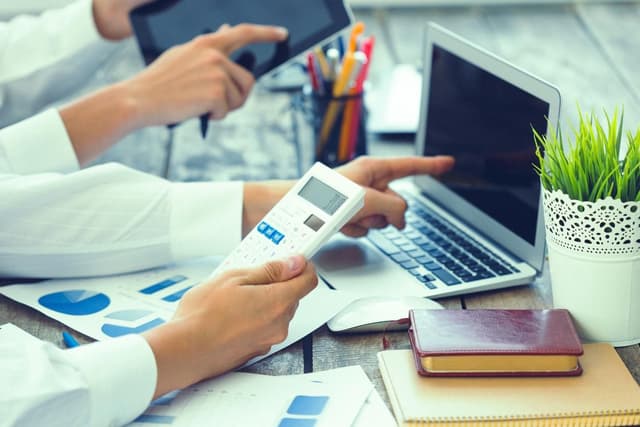Ledgers Reconciliation
How Much Time Can You Reclaim? Exploring the Efficiency of Automated Balance Sheet Reconciliation
Discover the potential time savings and efficiency gains achieved by implementing automated balance sheet reconciliation, empowering you to focus on strategic initiatives and drive organizational growth.

Amrit Mohanty
Feb 13, 2024 (Last Updated: Jun 11, 2025)

Are you truly making the most of your time? Or is it being consumed by the endless cycle of manual reconciliation? As financial advisors and finance managers, your days are likely filled with balancing acts, juggling numbers, and striving for accuracy in every financial report. But how much time are you really spending on tasks that could be automated or How much efficiency could you gain if you could streamline your balance sheet reconciliation process?
Well, if these questions perplex your mind when it comes to balance sheet reconciliation, let's explore something fascinating about the subject!
Imagine a world where tedious manual reconciliation tasks are a thing of the past. Picture yourself reclaiming those countless hours spent sifting through spreadsheets, verifying transactions, and rectifying discrepancies. What if you could redirect that time and energy toward strategic financial analysis, proactive decision-making, or even a well-deserved break?
Welcome to automated balance sheet reconciliation, where efficiency reigns supreme. In this exploration, we'll delve into the transformative power of automation in financial management. We'll uncover how embracing automated solutions can save time, enhance accuracy, mitigate risks, and unlock valuable insights for your organization.
So, let's embark on this journey together, unraveling the mysteries of manual reconciliation and discovering the boundless opportunities that automation brings. Are you ready to reclaim your time and revolutionize your approach to financial management? Let's dive in.
The Cost of Time in Manual Reconciliation
In the world of manual reconciliation, time isn't just a precious commodity; it's costly. Think about it: every hour spent tediously matching transactions and hunting down discrepancies is lost to more strategic endeavors. As financial advisors and managers, your expertise is invaluable, yet too often, it's buried under mountains of paperwork and spreadsheets. The extensive hours dedicated to manual reconciliation drain your productivity and detract from your ability to focus on high-value tasks like financial analysis, forecasting, and strategic planning. Moreover, the inherent risk of human error looms large in traditional reconciliation methods. A simple typo or oversight can snowball into significant discrepancies, leading to inaccurate financial reporting, compliance issues, and even financial losses. In the fast-paced world of finance, there's no room for costly mistakes. It's time to break free from the shackles of manual reconciliation and reclaim your time for what truly matters: driving your organization forward with informed decision-making and strategic insights.
A New Era of Efficiency: Automated Reconciliation
Welcome to a new era of efficiency: automated balance sheet reconciliation. Automated reconciliation systems are revolutionizing how organizations approach their financial processes and are powered by cutting-edge technologies such as AI, ML, and RPA. These advanced solutions are designed to streamline the reconciliation process from end to end, leveraging algorithms to match transactions, identify discrepancies, and reconcile accounts with unprecedented speed and accuracy. By harnessing the computational prowess of modern technology, automated reconciliation not only eliminates the tedious manual labor associated with traditional methods but mitigates the risk of human error. With real-time insights and customizable workflows, these systems empower financial advisors and managers to focus their attention on high-value strategic initiatives, driving growth and innovation within their organizations. It's a paradigm shift that promises to unlock newfound efficiencies, enhance decision-making capabilities, and propel businesses into a future where financial management is agile, intelligent, and seamlessly integrated with the digital landscape.
Streamlining Operations: The Power of Automated Reconciliation
Automated reconciliation processes offer myriad benefits, revolutionizing traditional methods and driving efficiency in various industries. Here are three key benefits:
- Enhanced Accuracy: Automated reconciliation eliminates the risk of human error inherent in manual processes. Discrepancies can be precisely and quickly identified and resolved by utilizing machine learning and advanced algorithms, ensuring data integrity and compliance.compliance.
- Accelerated Speed: Automation significantly reduces the time required to reconcile transactions, accounts, or records. Complex tasks that once took hours or days to complete can now be executed in minutes, enabling organizations to expedite financial close processes and make data-driven decisions in real time.
- Resource Optimization: Organizations can redeploy valuable human resources to more strategic and value-added activities by automating repetitive reconciliation tasks. This boosts productivity and empowers employees to focus on activities that drive innovation, growth, and customer satisfaction.
In essence, automated reconciliation not only enhances accuracy and speed but also unlocks the potential for organizations to optimize their workforce and drive sustainable growth in today's dynamic business landscape.
Real-World Impacts: Case Studies and Success Stories

Best Practices for Implementing Automation

Implementing automation, particularly in reconciliation processes, requires careful planning and selection of the right tools. Here are some of the best practices and considering key factors in software selection, organizations can maximize the benefits of automation and drive operational efficiency.
- Assess Current Processes: Before implementing automation, thoroughly assess existing reconciliation processes. Identify any pain points, inefficiencies, and areas for improvement to inform your automation strategy.
- Set Clear Objectives: Define specific objectives and goals for automation implementation, such as reducing errors, improving efficiency, or enhancing data accuracy. Establish measurable benchmarks to track progress and success.
- Involve Stakeholders: Engage stakeholders across departments, including finance, IT, and operations, to gather input and ensure alignment with organizational objectives. Collaboration fosters buy-in and facilitates smooth implementation.
- Training and Change Management: Provide comprehensive training to staff affected by the automation to ensure they grasp the new processes and technologies. Implement change management tactics to overcome resistance and increase adoption.
- Start Small and Scale: Begin with pilot projects or smaller-scale automation initiatives to test workflows, identify challenges, and refine processes. Once successful, gradually expand automation efforts across the organization.
- Continuously Monitor and Improve: Regularly evaluate the performance of automated processes and software solutions. Get feedback from the users and stakeholders to identify areas for optimization and enhancement.
Navigating the Path to Automation: Selecting the Right Reconciliation Software
Implementing automation in reconciliation processes can significantly enhance accuracy and efficiency while freeing up resources for strategic initiatives. However, selecting the right reconciliation software is critical to maximizing the benefits of automation. Here are the key factors to consider when choosing reconciliation software:
Compatibility and Integration: Ensure that the reconciliation solution works seamlessly with your existing systems, such as ERP, CRM, or accounting software. Compatibility is critical for data synchronization and efficient workflow automation. Look for solutions that handle a wide range of file formats and data sources, as well as flexible integration capabilities.
Advanced Matching Algorithms: Choose reconciliation software equipped with advanced matching algorithms capable of handling complex data sets and accurately identifying discrepancies. Look for features such as fuzzy matching, tolerance settings, and customizable matching rules to tailor the software to your specific reconciliation requirements.
Customization and Scalability: Evaluate the customization capabilities of the reconciliation software to align with your organization's unique workflows and processes. Opt for a solution that offers configurable dashboards, report templates, and workflow automation features. Additionally, consider the software's scalability to handle future growth and evolving business requirements.
Security and Compliance: These are the 2 paramount factors to consider when selecting reconciliation software, especially for sensitive financial data. Choose a solution that adheres to industry-standard security protocols, such as encryption, role-based access controls, and audit trails. Ensure that the software solution complies with regulatory requirements, such as GDPR, SOX, or HIPAA, depending on your industry.
User Experience and Support: Consider the usability and intuitiveness of the reconciliation software to facilitate user adoption and minimize training efforts. Look for a user-friendly interface, comprehensive documentation, and responsive customer support services. Evaluate the vendor's track record in providing timely assistance, software updates, and ongoing maintenance to ensure a seamless user experience.
Mastering Automation Integration: Tips for Seamless Implementation into Financial Systems
- Understand Existing Systems: Conduct a thorough assessment of current financial systems, processes, and data structures. Identify potential integration points and data dependencies.
- Data Mapping: Define data mapping requirements to ensure seamless data exchange between reconciliation software and existing systems. Standardize data formats and conventions where possible.
- Collaboration with IT: Involve IT stakeholders early in the implementation process to address technical requirements, security considerations, and system compatibility.
- Pilot Testing: Conduct pilot testing with a subset of data to validate reconciliation software functionality, identify any issues or gaps, and refine implementation plans.
- Training and Change Management: Provide comprehensive training to end users on how to use the new reconciliation software effectively. Implement change management strategies to facilitate adoption and minimize resistance to change.
- Continuous Improvement: Establish processes for monitoring, measuring, and optimizing reconciliation automation over time. To find areas for improvement and address new issues, get input from users and stakeholders.
Future-Proofing Your Finance Department
Automation plays a critical role in future-proofing the finance department as organizations navigate an increasingly complex and volatile financial environment. Automated balance sheet reconciliation tackles present operational issues while preparing firms to adapt and thrive in the face of future financial uncertainty. By leveraging advanced technologies, automated reconciliation enhances accuracy, accelerates processing times, and mitigates compliance risks. Moreover, automation enables finance teams to focus on strategic initiatives and value-added activities rather than mundane and time-consuming manual tasks. This shift in focus fosters a culture of innovation within the finance department, empowering employees to explore new opportunities, optimize processes, and drive business growth. Furthermore, automated reconciliation provides real-time insights into financial data, allowing organizations to make informed decisions, identify emerging trends, and seize opportunities for expansion and diversification. By embracing automated balance sheet reconciliation, organizations can future-proof their finance departments, unlock new levels of efficiency, and position themselves for sustained growth and innovation in the years to come.
Conclusion: Reclaiming Time for What Matters Most
In summary, the transformative potential of automated balance sheet reconciliation cannot be overstated. By harnessing the power of automation, organizations can streamline operations, enhance accuracy, and position themselves for future growth and innovation. As we reflect on the value of our time and the strategic shift that automation can facilitate, it becomes evident that embracing automated reconciliation is not just about optimizing processes—it's about empowering finance professionals to focus on strategic initiatives that drive value and propel the organization forward. By freeing up time from manual reconciliation tasks, automation allows finance teams to allocate resources more effectively, whether analyzing financial data, identifying growth opportunities, or enhancing decision-making processes. As we embark on this digital transformation journey, let us recognize the immense potential of automated reconciliation to revolutionize the finance department and propel our organizations toward greater success in the ever-evolving landscape of finance and business.

